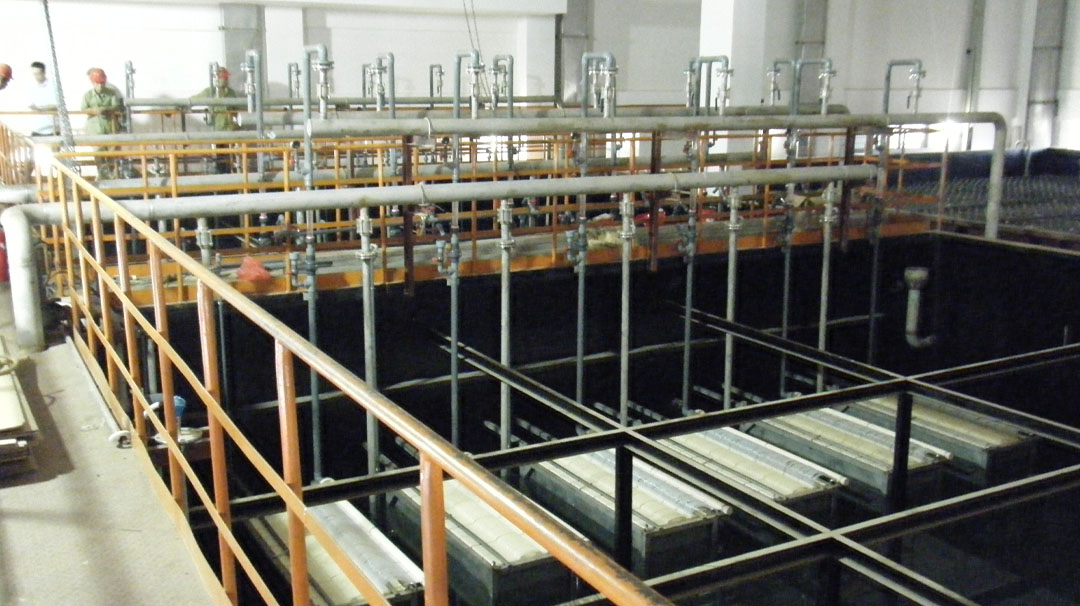
Membrane bioreactor (MBR) technology is one of the most advanced wastewater treatment processes available today. MBR systems combine conventional activated sludge processes with membrane filtration to provide an intensive (low-footprint) biological treatment that results in significantly cleaner effluent water.
Peier offers a wide range of MBR membrane products that are specially designed for use in wastewater treatment applications. Our state-of-the-art facilities allow us to produce membranes with precise pore sizes and surface charges that are optimized for a particular application.
MBR systems have many advantages over traditional wastewater treatment processes, including:
• Reduced footprint – since MBR systems do not require secondary clarification, they can be much smaller in size than traditional treatment plants. This can be a major advantage for sites with limited space available.
• Improved effluent quality – the combination of biological treatment and membrane filtration results in effluent water that is significantly cleaner than what can be achieved with traditional treatment methods.
• Reduced operation and maintenance costs – MBR systems are typically much easier to operate and maintain than traditional wastewater treatment plants, resulting in lower overall costs.
• High effluent quality – One of the greatest advantages of MBR technology is the high effluent quality that it produces. Membranes allow for the removal of smaller particles than what can be removed by traditional sedimentation processes, resulting in effluent with very low levels of turbidity and suspended solids.
• Ability to treat a wide range of wastewaters – MBR technology can be used to treat a variety of different wastewaters, including municipal sewage, industrial process water, stormwater runoff, and landfill leachate.
• Higher sludge volume reduction than other processes – Another advantage of MBR technology is the fact that it results in a higher sludge volume reduction than other wastewater treatment processes. This is due to the fact that membranes capture biomass in the mixed liquor, which results in less waste solids that need to be handled and disposed of.
If you are interested in learning more about how MBR technology could benefit your wastewater treatment needs, contact Peier today. We would be happy to discuss your specific application and provide you with a proposal for our state-of-the-art MBR membranes.
Membrane bioreactor (MBR) technology is an advanced wastewater treatment process that offers many benefits over traditional methods, including a reduced footprint, improved effluent quality, and reduced operation and maintenance costs. If you are interested in learning more about how MBR technology could benefit your wastewater treatment needs, contact Peier today. We would be happy to discuss your specific application and provide you with a proposal for our state-of-the-art MBR membranes.
Abuot Jiangsu Peier membrane
Jiangsu Peier membrane corp.,Ltd(Stock Code: 836744) was established in 2007 with a registered capital of 48 million Yuan, referred to as “Peier membrane industry”.
It is a high-tech enterprise focusing on the R&D, production, manufacturing and service of MBR flat sheet membrane products. Its Peier Product category as below:
- Flat Sheet Membrane Element
- Flat Sheet Membrane Element-Single Nozzle
- Flat Sheet Membrane Element-Double Nozzle
- Flat Sheet Membrane Element-3D Soft Support
- Flat Sheet Membrane Element-Renovated Membrane
- Flat Sheet Membrane Module
- Flat Sheet Membrane Module-Module-Single Nozzle
- Flat Sheet Membrane Module-Module-Double Nozzle
- Flat Sheet Membrane Module-2S(Double Deck)
- Flat Sheet Membrane Module-3S(High Flux)
- Flat Sheet Membrane Module-Mini Module
- MBR System
- MBR System-Laboratory Test Equipment
- MBR System-Pilot Equipment
- MBR System-Package System
Peier membrane always adheres to R&D and cooperation with well-known universities at home and abroad, such as Tsinghua University, Sydney University, Nanjing University of technology, Changzhou University and Jiangnan University.
It is the editor in chief of the national industry standard HY/T252-2018 “submerged flat membrane element for water treatment”.
At present, it has 6 invention patents, 46 new utility patents, 1 appearance patent and 4 software works.